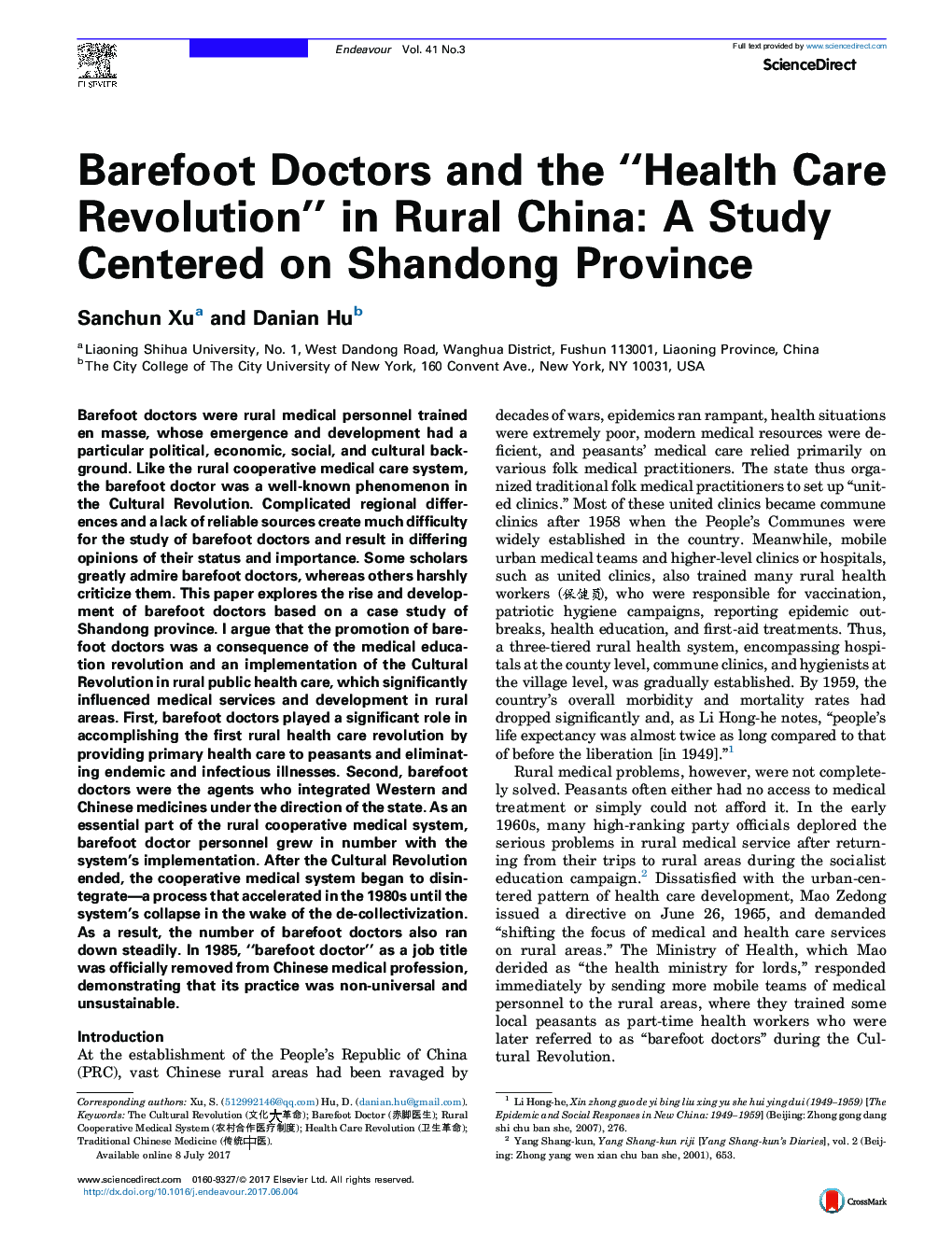| Article ID | Journal | Published Year | Pages | File Type |
|---|---|---|---|---|
| 5130225 | Endeavour | 2017 | 10 Pages |
â¢The origin of barefoot doctors.â¢Barefoot doctors' daily work.â¢Barefoot doctors and the development of medical science.â¢The three-tiered rural medical system.â¢Compliments and criticisms.
Barefoot doctors were rural medical personnel trained en masse, whose emergence and development had a particular political, economic, social, and cultural background. Like the rural cooperative medical care system, the barefoot doctor was a well-known phenomenon in the Cultural Revolution. Complicated regional differences and a lack of reliable sources create much difficulty for the study of barefoot doctors and result in differing opinions of their status and importance. Some scholars greatly admire barefoot doctors, whereas others harshly criticize them. This paper explores the rise and development of barefoot doctors based on a case study of Shandong province. I argue that the promotion of barefoot doctors was a consequence of the medical education revolution and an implementation of the Cultural Revolution in rural public health care, which significantly influenced medical services and development in rural areas. First, barefoot doctors played a significant role in accomplishing the first rural health care revolution by providing primary health care to peasants and eliminating endemic and infectious illnesses. Second, barefoot doctors were the agents who integrated Western and Chinese medicines under the direction of the state. As an essential part of the rural cooperative medical system, barefoot doctor personnel grew in number with the system's implementation. After the Cultural Revolution ended, the cooperative medical system began to disintegrate-a process that accelerated in the 1980s until the system's collapse in the wake of the de-collectivization. As a result, the number of barefoot doctors also ran down steadily. In 1985, “barefoot doctor” as a job title was officially removed from Chinese medical profession, demonstrating that its practice was non-universal and unsustainable.
